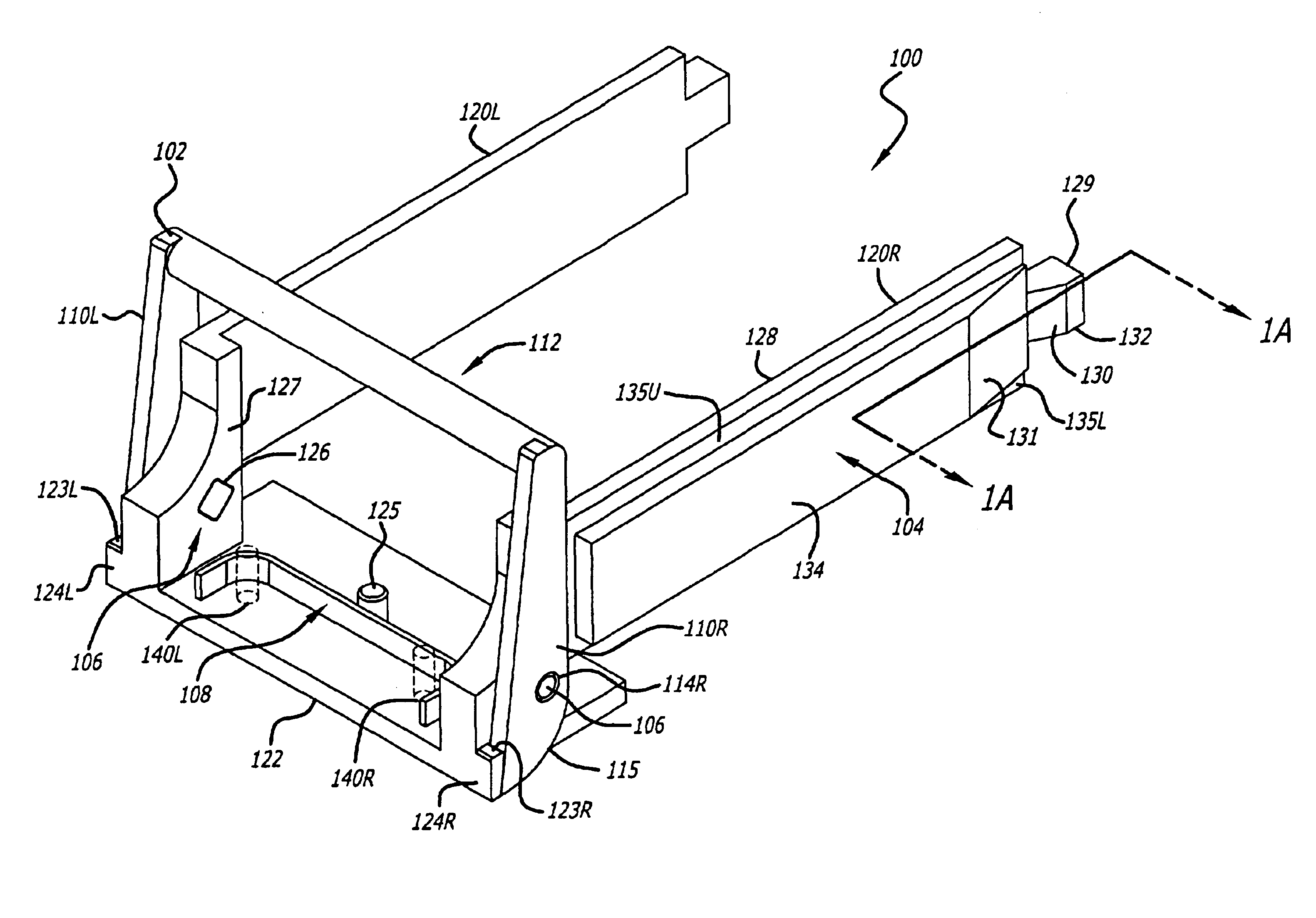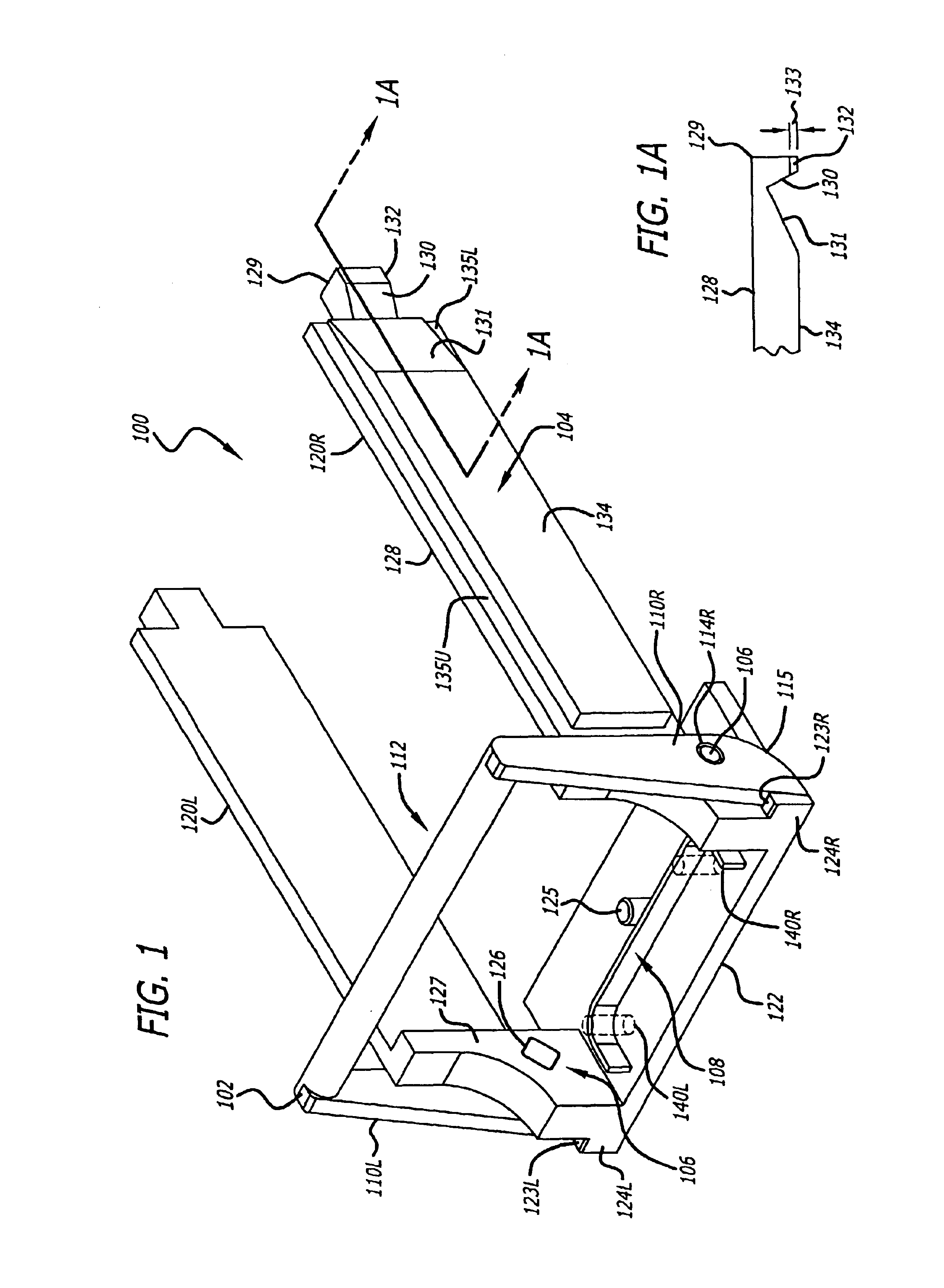Cam-follower release mechanism for fiber optic modules with side delatching mechanisms
a technology of fiber optic modules and release mechanisms, applied in the field of fiber optic modules, can solve the problems of more difficult handling for users, more difficult to remove failed fiber optic modules, and inability to meet the needs of users,
- Summary
- Abstract
- Description
- Claims
- Application Information
AI Technical Summary
Benefits of technology
Problems solved by technology
Method used
Image
Examples
Embodiment Construction
In the following detailed description of the invention, numerous specific details are set forth in order to provide a thorough understanding of the invention. However, one skilled in the art would recognize that the invention may be practiced without these specific details. In other instances well known methods, procedures, components, and circuits have not been described in detail so as not to unnecessarily obscure aspects of the invention.
In the following description, certain terminology is used to describe various features of the invention. For example, a “fiber-optic transceiver” is a fiber optic module having optical signal transmit and receive capability. The terms “disengage”, “release”, “unlatch”, and “de-latch” may be used interchangeably when referring to the de-coupling of a fiber optic module from a cage assembly.
The invention includes methods, apparatuses and systems for fiber optic modules including releasable fiber optic modules in a form factor to satisfy a 10 Gigabi...
PUM
 Login to View More
Login to View More Abstract
Description
Claims
Application Information
 Login to View More
Login to View More - R&D
- Intellectual Property
- Life Sciences
- Materials
- Tech Scout
- Unparalleled Data Quality
- Higher Quality Content
- 60% Fewer Hallucinations
Browse by: Latest US Patents, China's latest patents, Technical Efficacy Thesaurus, Application Domain, Technology Topic, Popular Technical Reports.
© 2025 PatSnap. All rights reserved.Legal|Privacy policy|Modern Slavery Act Transparency Statement|Sitemap|About US| Contact US: help@patsnap.com



